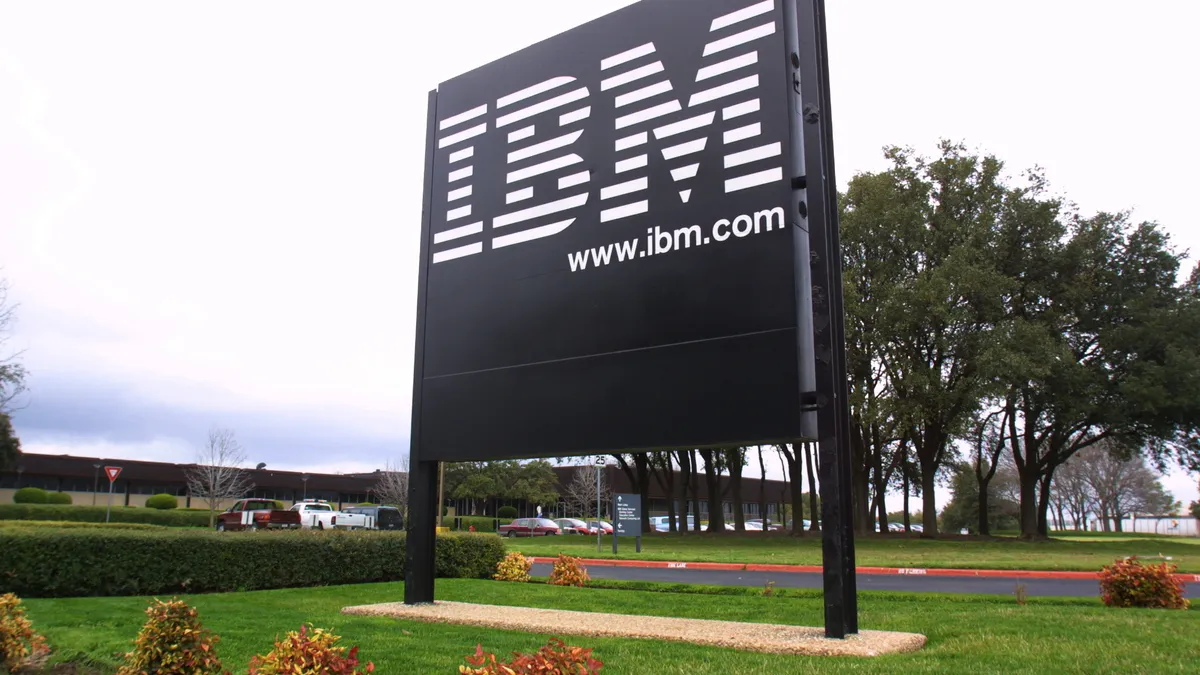IBM isn’t one of the big players in the pure cloud market, but the tech company wants to make a name for itself in hybrid cloud by targeting industry-specific solutions.
Apart from mainframe domination, IBM has a history leveraging its business acumen for technological innovations in spaces tangential to compute — from workplace time-keeping systems to typewriters and copy machines.
“Their intention is to truly cloudify their mainframe,” Brent Ellis, senior analyst at Forrester, said in an interview with CIO Dive. “They’re not quite there, but they’re working on it.”
Hybrid and multicloud environments that incorporate on-prem represent a new opportunity for the company, especially in heavily regulated industries.
“One challenge for our highly regulated clients is to have public cloud as an option for application modernization, but to have an environment that is stable, secure and resilient enough for mission critical and core workloads,” Hillery Hunter, CTO, IBM Cloud, told CIO Dive in an interview.
IBM’s IT footprint is broad, encompassing zSystems mainframes and supporting technologies, public cloud infrastructure, Red Hat open source and “as a Service” software, and managed services and consulting. Hybrid cloud allows the company to align those divisions into a unified front.
“There’s IBM Cloud, and there are cloud services and products that operate in other infrastructure,” Ellis said.
With technologies that bridge the gap between on-prem and cloud, IBM can maintain long-term relationships with companies in sectors that have traditionally relied on the mainframe.
“When you talk about public cloud, they are leaning into the industries that they know best, one of which is financial services,” Ellis said.
Many of those companies spend more than half of their IT budgets keeping hybrid systems integrated, compliant and secure, Hunter said.
“There’s a need for ‘as a Service’ offerings that are differentiated and where there's a lot of data protection and security, and also for services that help protect your keys no matter where your workloads are running,” said Hunter.
In the public cloud space, IBM is focused on “mid back-office workload optimization with security, compliance and stability for regulated industries,” Hunter said.
IBM owns just 3% of a cloud market that surpassed $57 billion in Q3 alone and is approaching a $100 billion annual run rate, according to an October report by Synergy Research Group.
In contrast, AWS, Microsoft and Google combined command an estimated 75% of the market in the U.S.
Strategic partnership with hyperscalers, including a deepening collaboration with AWS, helped drive cloud revenue for IBM to just over one-third of all revenue in Q3 2022, according to the company.
Arvind Krishna, IBM’s chairman and CEO, pointed to “solid demand” for the company’s hybrid cloud and AI solutions in opening remarks during a Q3 2022 earnings call on Oct. 19. The company reported $22.2 billion in revenue from hybrid cloud, up 15% year over year for the period ending Sept. 30.
Hybrid and multicloud are “foundational” to IBM’s business strategy, Arun Chandrasekaran, distinguished vice president and analyst at Gartner told CIO Dive via email.
“IBM Cloud is unique in its ability to interoperate with mainframe environments,” Chandrasekaran said.













